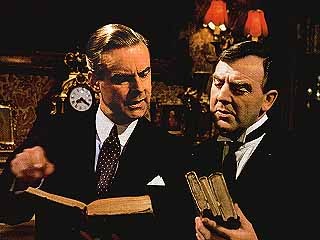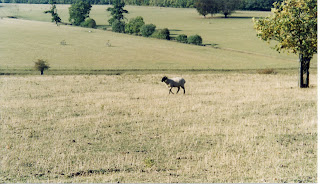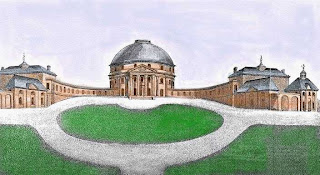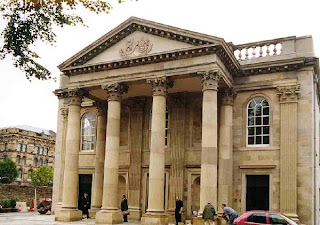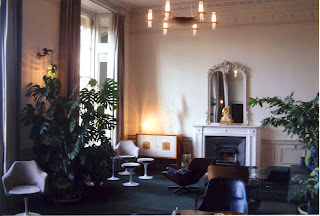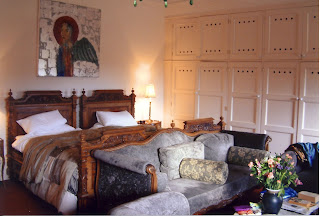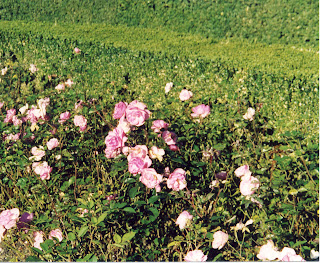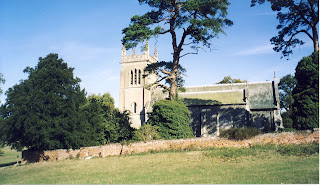Rees Howell Gronow (1794 – 1865) is remembered best for his Reminiscences, which he wrote down in his old age. Some observers suspect his memories were not always accurate, but he presents a clear picture of the Regency era and subsequent events, particularly in regard to the characters he wrote about with frankness and humor.
He put out four volumes of his recollections from 1862-1866. His collected works appeared in 1888 and have been re-edited and re-published many times. In his youth, he was educated at Eton, where he was friendly with the poet Shelley. In 1812, Gronow was commissioned an Ensign in the Foot guards, eventually rising to be a Captain in the Welsh Grenadier Guards. He served in the Peninsular War and in 1815 at the Battle of Waterloo.
Romeo Coates
Always well dressed, Gronow moved in the highest circles of London society and wrote many accounts of the ladies and gentlemen whose exploits we still care about today. One of these men was Romeo Coates, a true eccentric. Robert Coates (1772-1848), often known as Romeo, was born in the West Indies and came to England with a substantial fortune…but let Gronow tell his story:
This singular man, more than forty years ago, occupied a large portion of public attention; his eccentricities were the theme of general wonder, and great was the curiosity to catch a glance at as strange a being as any that ever appeared in English society. This extraordinary individual was a native of one of the West India Islands, and was represented as a man of extraordinary wealth; to which, however, he had no claim.
About the year 1808 there arrived at the York Hotel, at Bath, a person about the age of fifty, somewhat gentlemanlike, but so different from the usual men of the day that considerable attention was directed to him. He was of a good figure; but his face was sallow, seamed with wrinkles, and more expressive of cunning than of any other quality. His dress was remarkable: in the day-time he was covered at all seasons with enormous quantities of fur; but the evening costume in which he went to the balls made a great impression, from its gaudy appearance; for his buttons as well as his knee-buckles were of diamonds. There was of course great curiosity to know who this stranger was; and this
curiosity was heightened by an announcement that he proposed to appear at the theatre in the character of Romeo. There was something so unlike the impassioned lover in his appearance–so much that indicated a man with few intellectual gifts–that everybody was prepared for a failure. No one, however, anticipated the reality.
On the night fixed for his appearance the house was crowded to suffocation. The playbills had given out that “an amateur of fashion” would for that night only perform in the character of Romeo; besides, it was generally whispered that the rehearsals gave indication of comedy rather than tragedy, and that his readings were of a perfectly novel character.
The very first appearance of Romeo convulsed the house with laughter. Benvolio prepares the audience for the stealthy visit of the lover to the object of his admiration; and fully did the amateur give the expression to one sense of the words uttered, for he was indeed the true representative of a thief stealing onwards in the night, “with Tarquin’s ravishing strides,” and disguising his face as if he were thoroughly ashamed of it. The darkness of the scene did not, however, show his real character so much as the masquerade, when he came forward with hideous grin, and made what he considered his bow,–which consisted in thrusting his head forward and bobbing it up and down several times, his body remaining perfectly upright and stiff, like a toy mandarin with moveable head.
His dress was outre in the extreme: whether Spanish, Italian, or English, no one could say; it was like nothing ever worn. In a cloak of sky-blue silk, profusely spangled, red pantaloons, a vest of white muslin, surmounted by an enormously thick cravat, and a wig a la Charles the Second, capped by an opera hat, he presented one of the most grotesque spectacles ever witnessed upon the stage. The whole of his garments were evidently too tight for him; and his movements appeared so incongruous, that every time he raised his arm, or moved a limb, it was impossible to refrain from laughter: but what chiefly convulsed the audience was the bursting of a seam in an inexpressible part of his dress, and the sudden extrusion through the red rent of a quantity of white linen sufficient to make a Bourbon flag, which was visible whenever he turned round. This was at first supposed to be a wilful offence against common decency, and some disapprobation was evinced; but the utter unconsciousness of the odd creature was soon apparent, and then urestrained mirth reigned throughout the boxes, pit, and gallery. The total want of flexibility of limb, the awkwardness of his gait, and the idiotic manner in which he stood still, all produced a most ludicrous effect; but when his guttural voice was heard, and his total misapprehension of every passage in the play, especially the vulgarity of his address to Juliet, were perceived, everyone was satisfied that Shakspeare’s Romeo was burlesqued on that occasion.
The balcony scene was interrupted by shrieks of laughter, for in the midst of one of Juliet’s impassioned exclamations, Romeo quietly took out his snuff-box and applied a pinch to his nose; on this a wag in the gallery bawled out, “I say, Romeo, give us a pinch,” when the impassioned lover, in the most affected manner, walked to the side boxes and offered the contents of his box first to the gentlemen, and then, with great gallantry, to the ladies. This new interpretation of Shakspeare was hailed with loud bravos, which the actor acknowledged with his usual grin and nod. Romeo then returned to the balcony, and was seen to extend his arms; but all passed in dumb show, so incessant were the shouts of laughter. All that went on upon the stage was for a time quite inaudible, but previous to the soliloquy “I do remember an apothecary,” there was for a moment a dead silence; for in rushed the hero with a precipitate step until he reached the stage lamps, when he commenced his speech in the lowest possible whisper, as if he had something to communicate to the pit that ought not to be generally known; and this tone was kept up throughout the whole of the soliloquy, so that not a sound could be heard.
The amateur actor showed many indications of aberration of mind
, and seemed rather the object of pity than of amusement; he, however, appeared delighted with himself, and also with his audience, for at the conclusion he walked first to the left of the stage and bobbed his head in his usual grotesque manner at the side boxes; then to the right, performing the same feat; after which, going to the centre of the stage with the usual bob, and placing his hand upon his left breast, he exclaimed, “Haven’t I done it well?” To this inquiry the house, convulsed as it was with shouts of laughter, responded in such a way as delighted the heart of Kean on one great occasion, when he said, “The pit rose at me.” The whole audience started up as if with one accord, giving a yell of derision, whilst pocket-handkerchiefs waved from all parts of the theatre.
The dying scene was irresistibly comic, and I question if Liston, Munden, or Joey Knight, was ever greeted with such merriment; for Romeo dragged the unfortunate Juliet from the tomb, much in the same manner as a washerwoman thrusts into her cart the bag of foul linen. But how shall I describe his death? Out came a dirty silk handkerchief from his pocket, with which he carefully swept the ground; then his opera hat was carefully placed for a pillow, and down he laid himself. After various tossings about he seemed reconciled to the position; but the house vociferously bawled out, “Die again, Romeo!” and, obedient to the command, he rose up, and went through the ceremony again. Scarcely had he lain quietly down, when the call was again heard, and the well-pleased amateur was evidently prepared to enact a third death; but Juliet now rose up from her tomb, and gracefully put an end to this ludicrous scene by advancing to the front of the stage and aptly applying a quotation from Shakspeare:
“Dying is such sweet sorrow,
That he will die again until to-morrow.”
Thus ended an extravaganza such as has seldom been witnessed; for although Coates repeated the play at the Haymarket, amidst shouts of laughter from the playgoers, there never was so ludicrous a performance as that which took place at Bath on the first night of his appearance. Eventually he was driven from the stage with much contumely, in consequence of its having been discovered that, under pretence of acting for a charitable purpose, he had obtained a sum of money for his performances. His love of notoriety led him to have a most singular shell-shaped carriage built, in which, drawn by two fine white horses, he was wont to parade in the park; the harness, and every available part of the vehicle (which was really handsome) were blazoned over with his heraldic device–a cock crowing, and his appearance was heralded by the gamins of London shrieking out “cock-a-doodle-doo.” Coates eventually quitted London and settled at Boulogne, where a fair lady was induced to become the partner of his existence, notwithstanding the ridicule of the whole world.
End of Gronow on Romeo Coates; More Gronow excerpts coming soon…










